
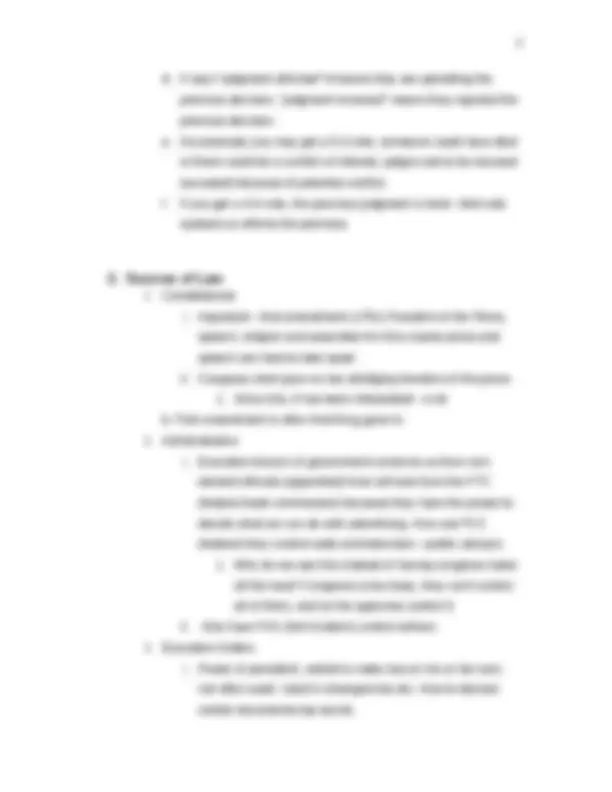
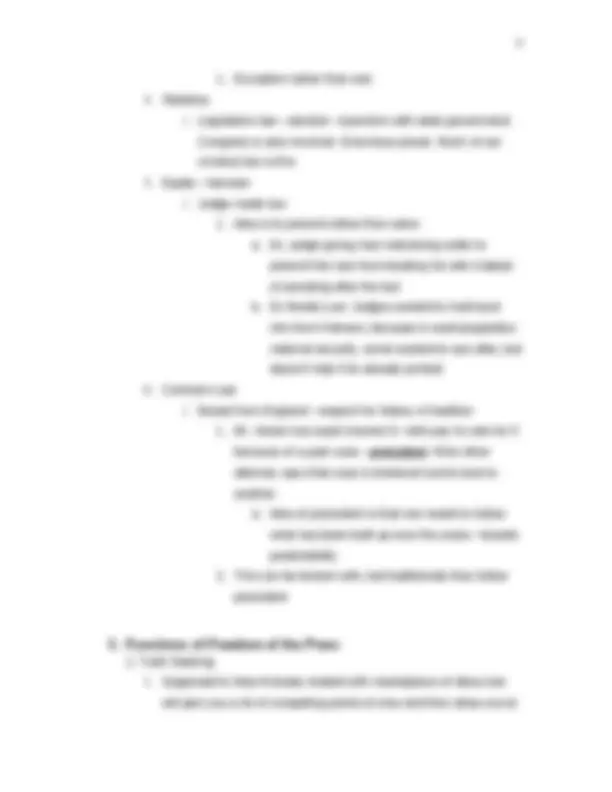
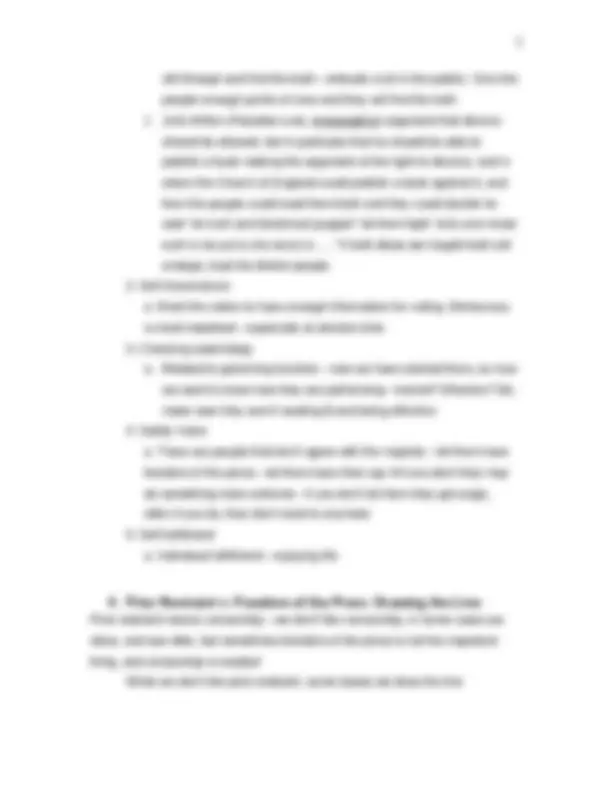
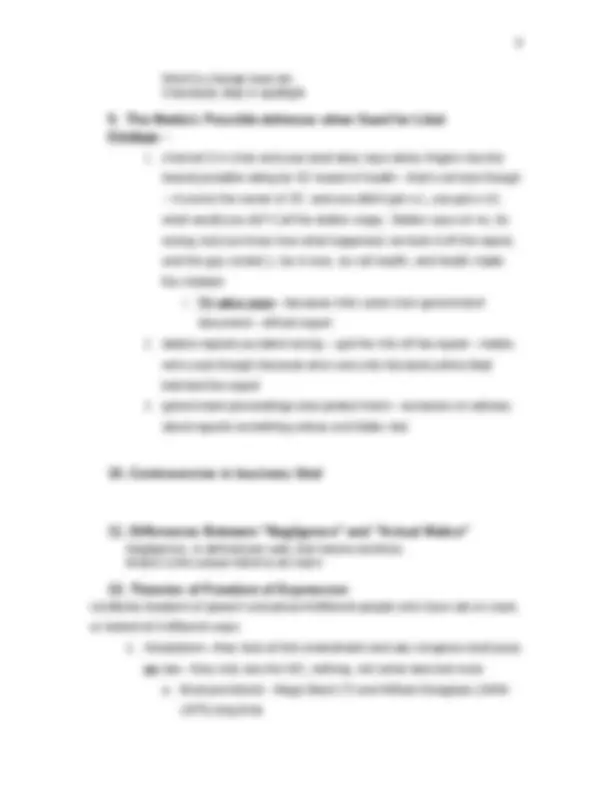
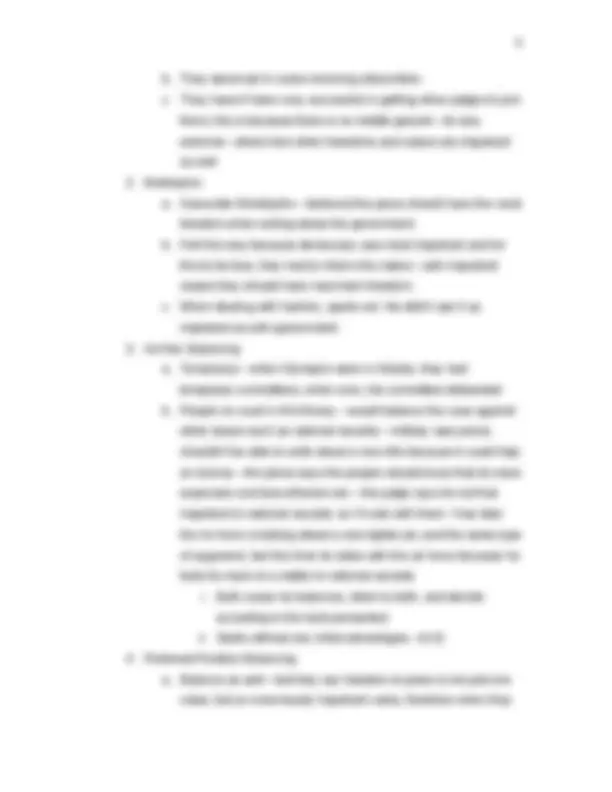
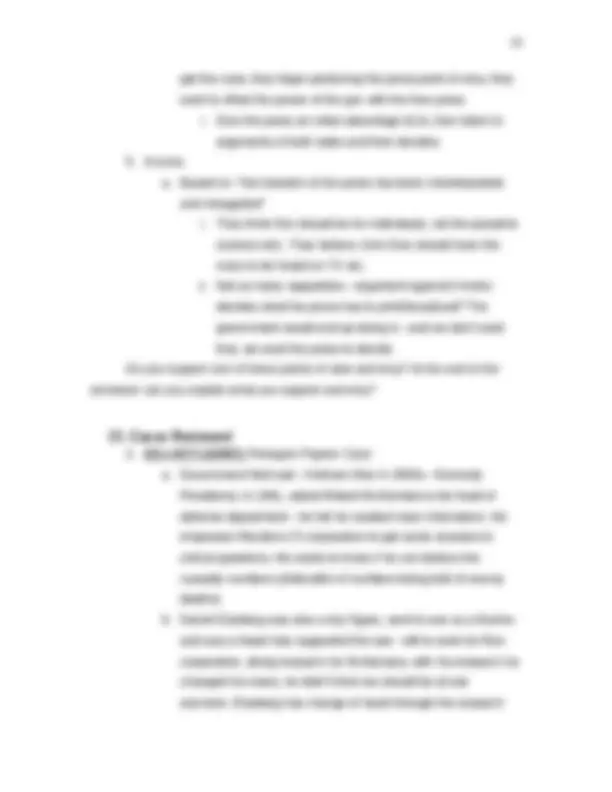
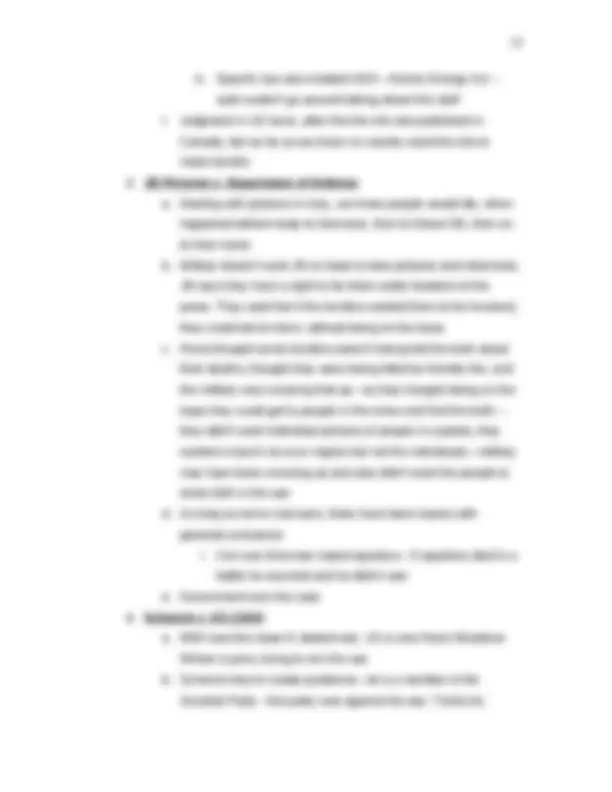
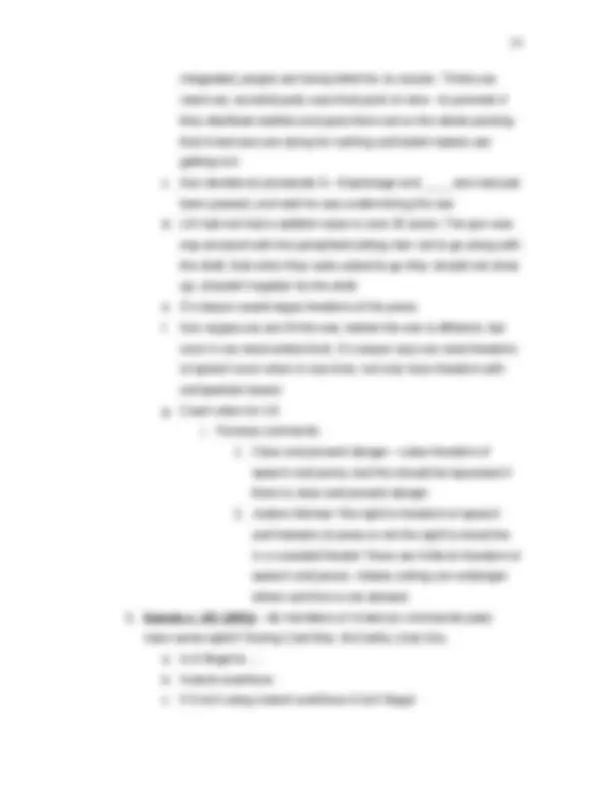
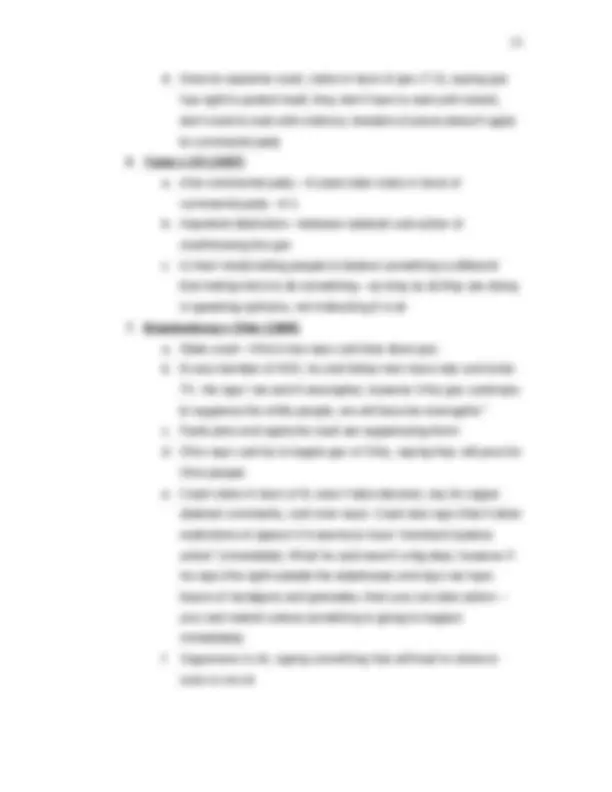
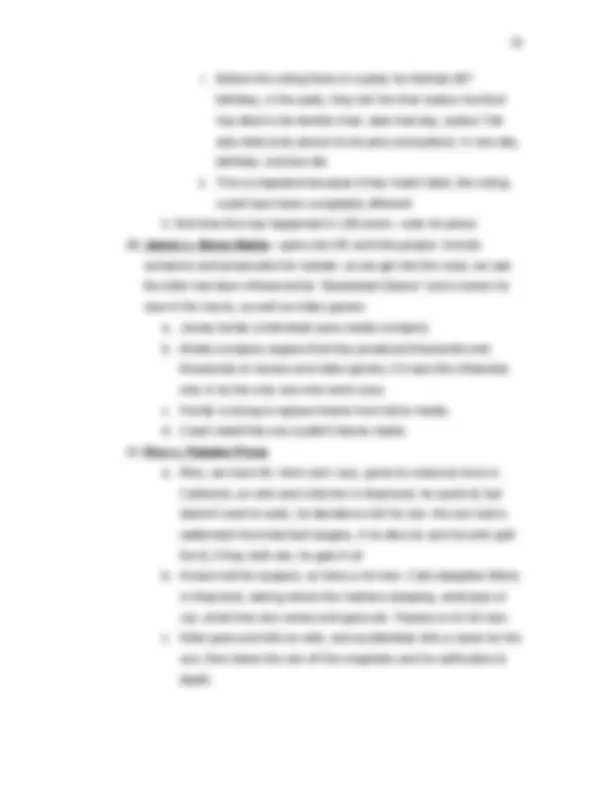

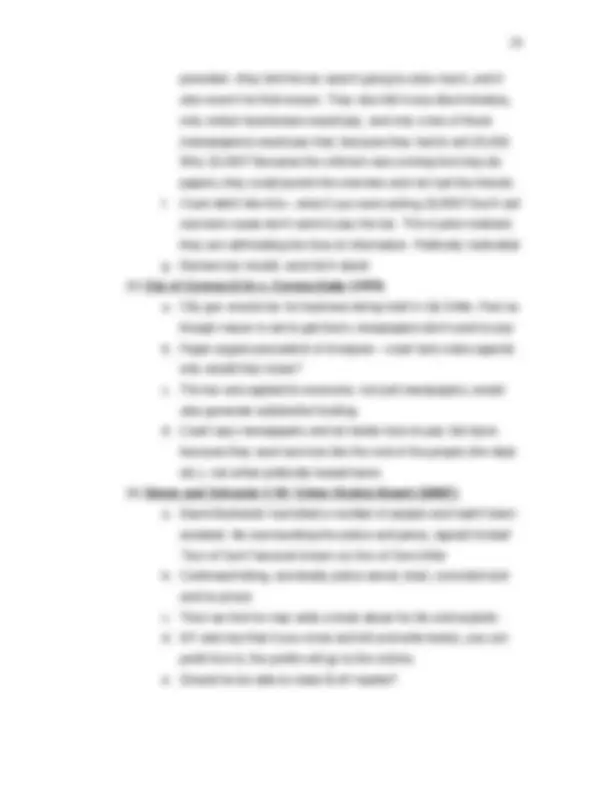
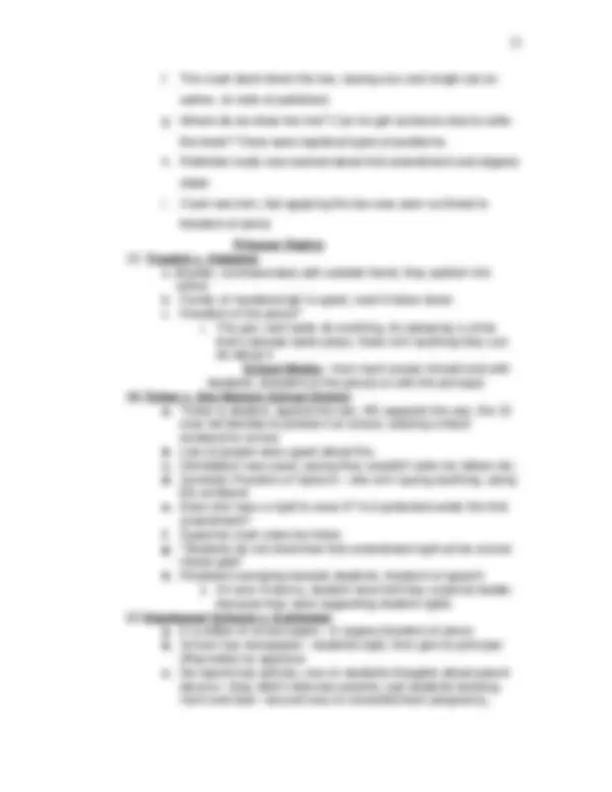
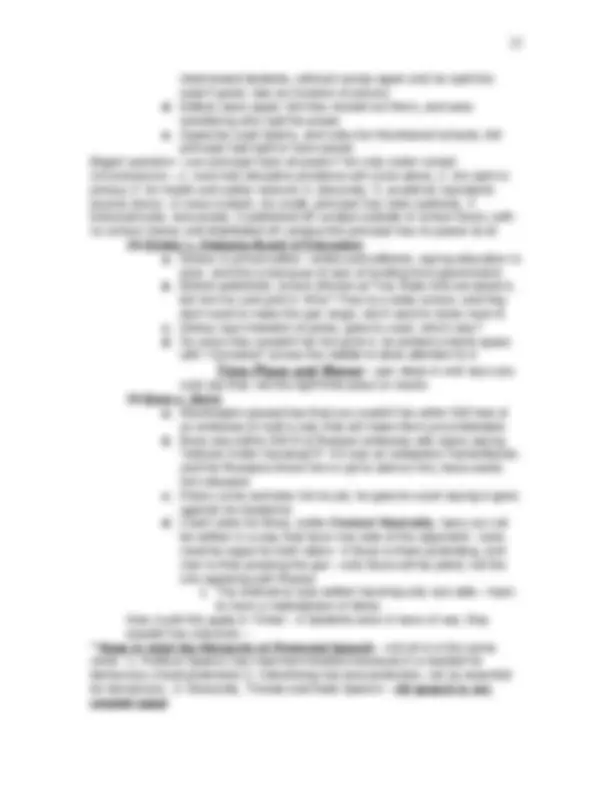
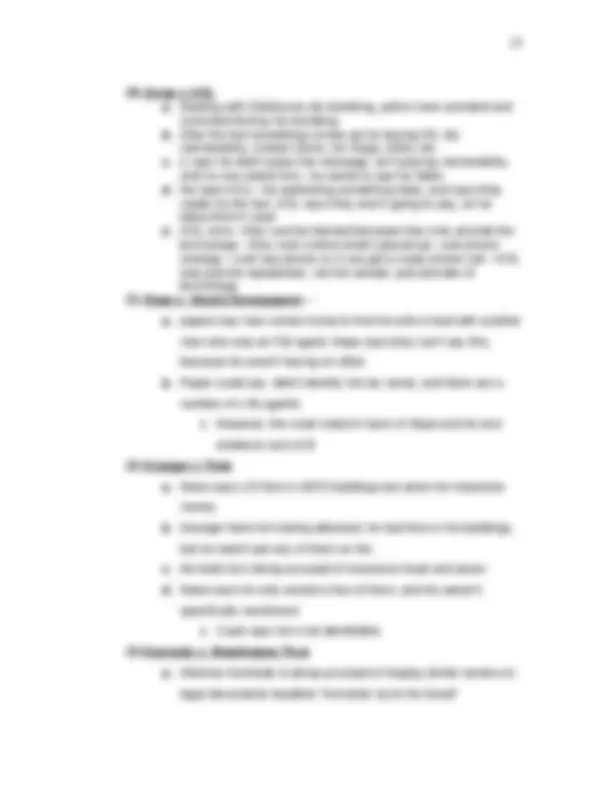
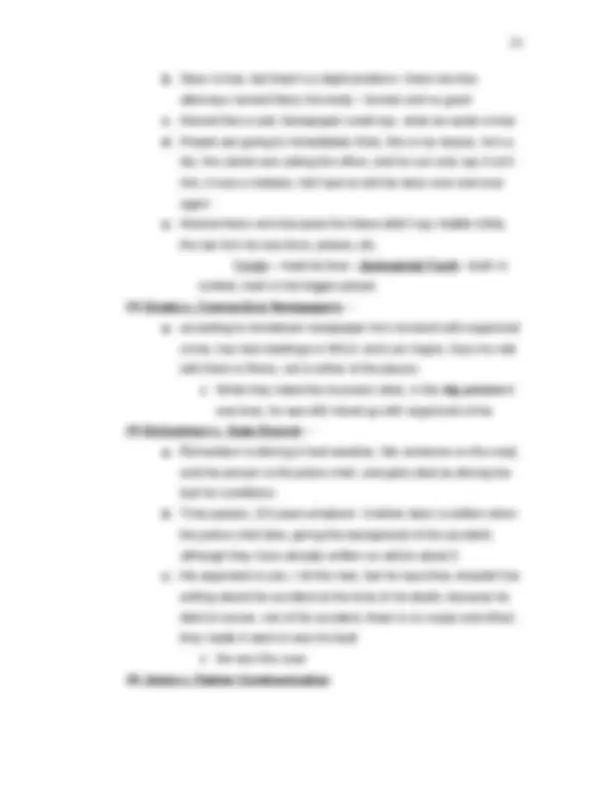
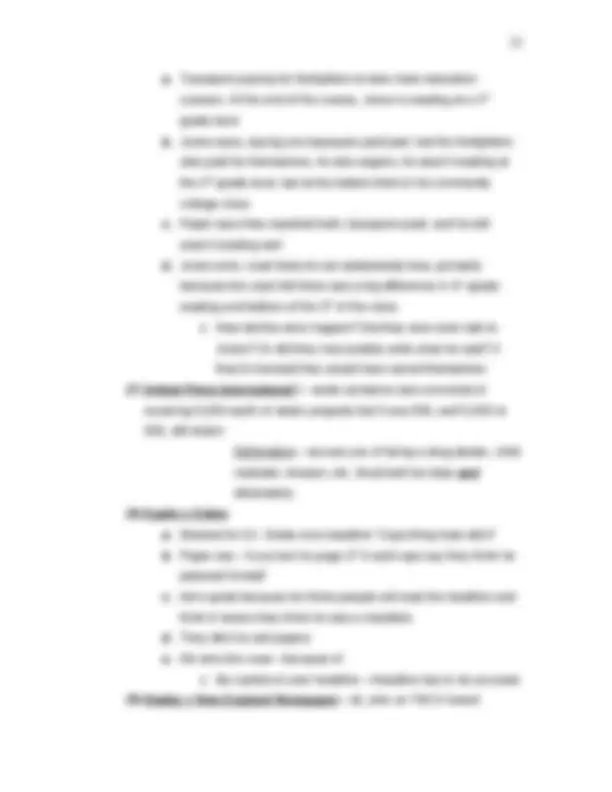
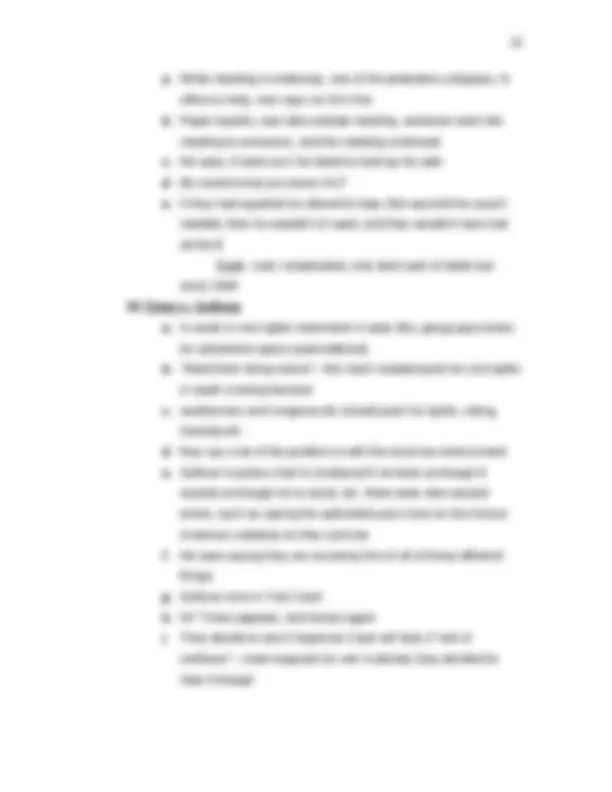
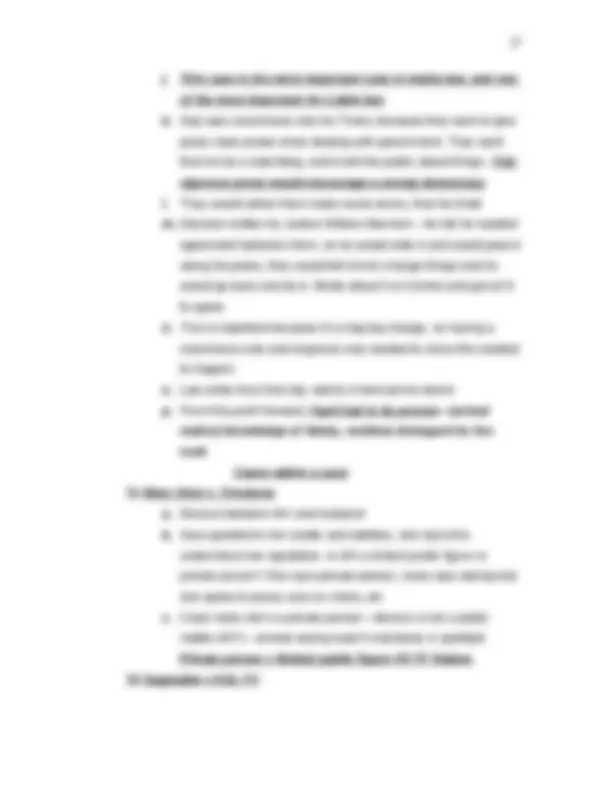
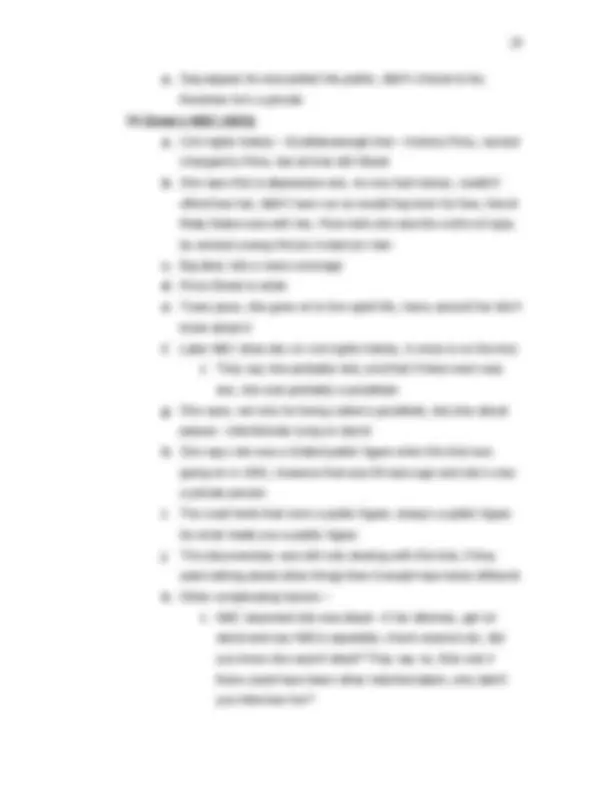
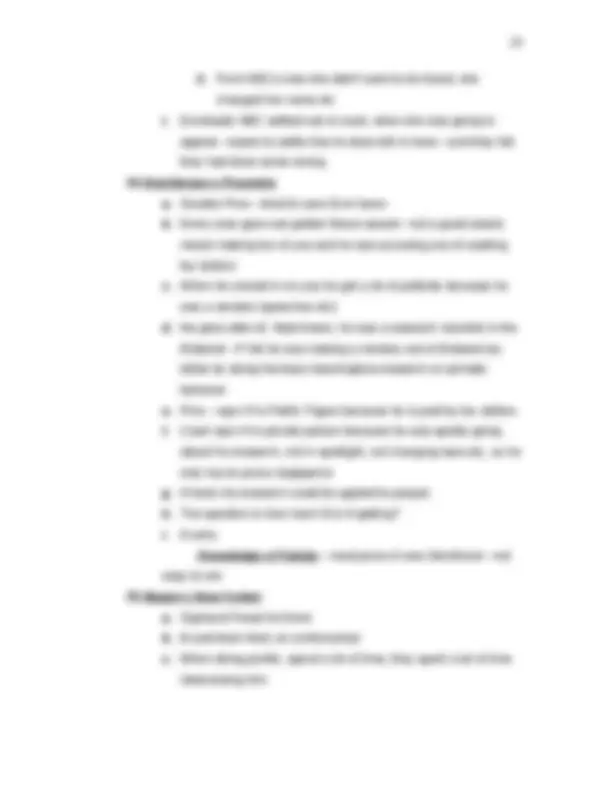
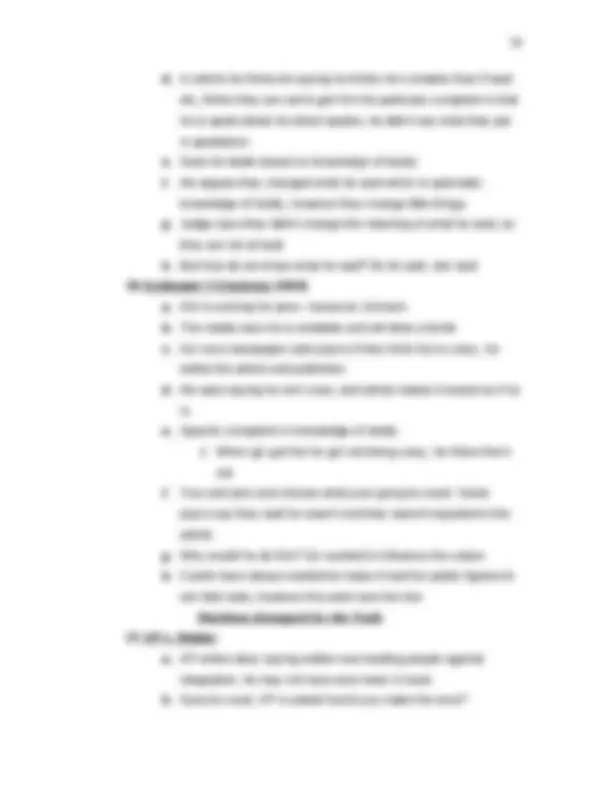
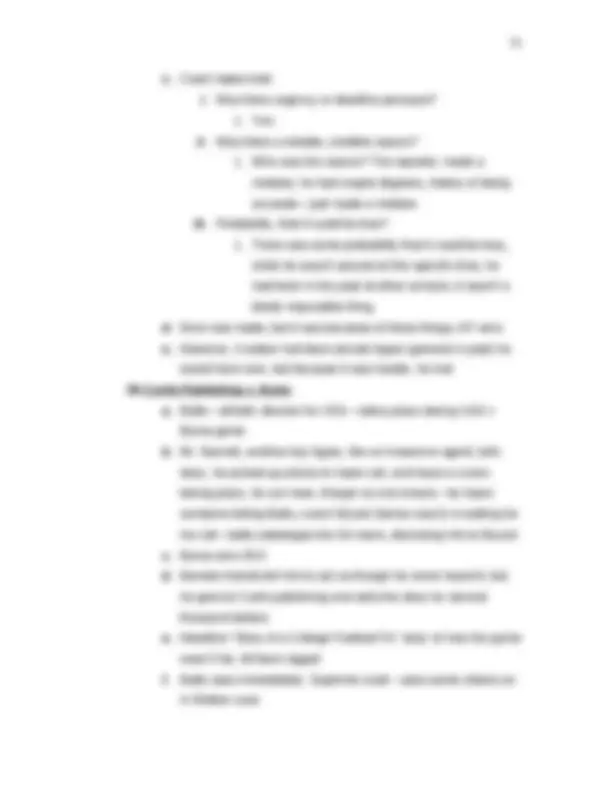
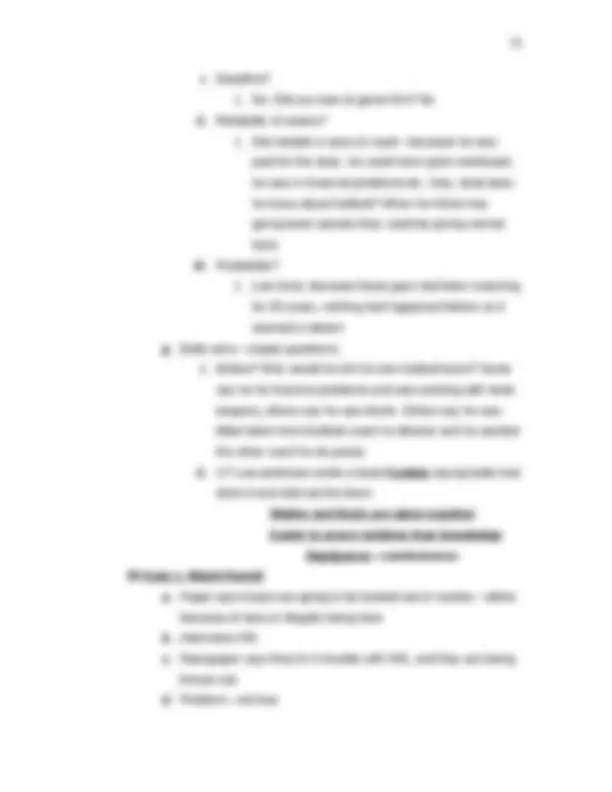
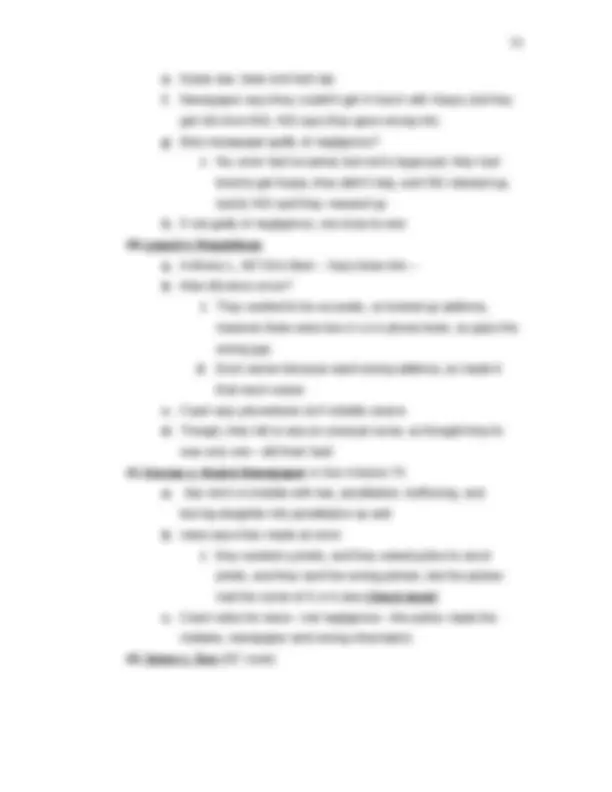
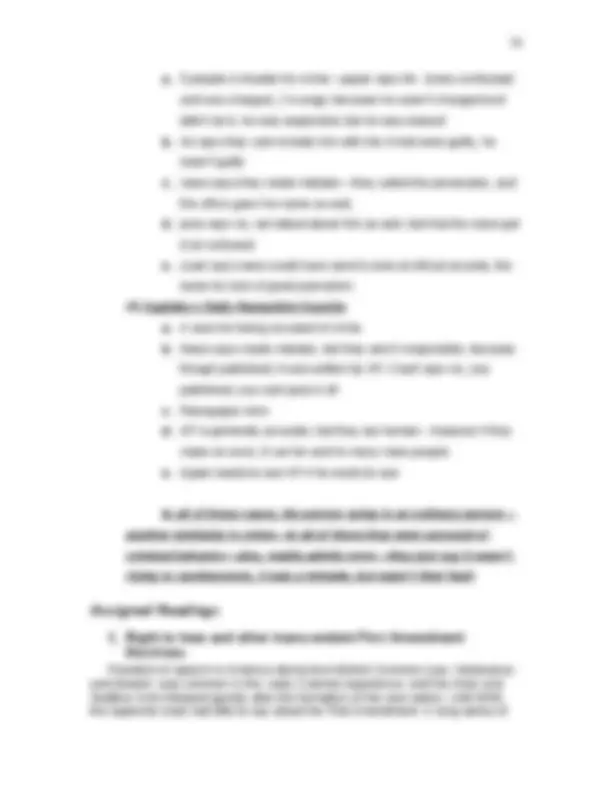
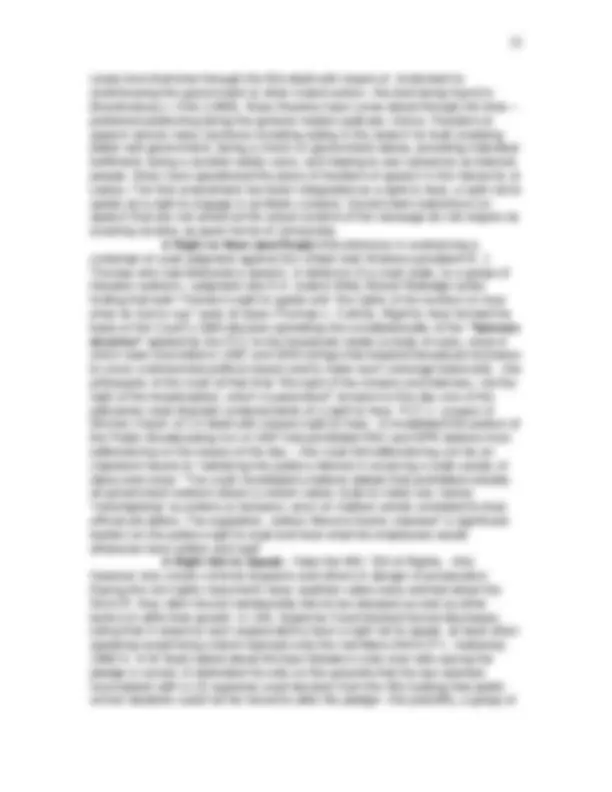
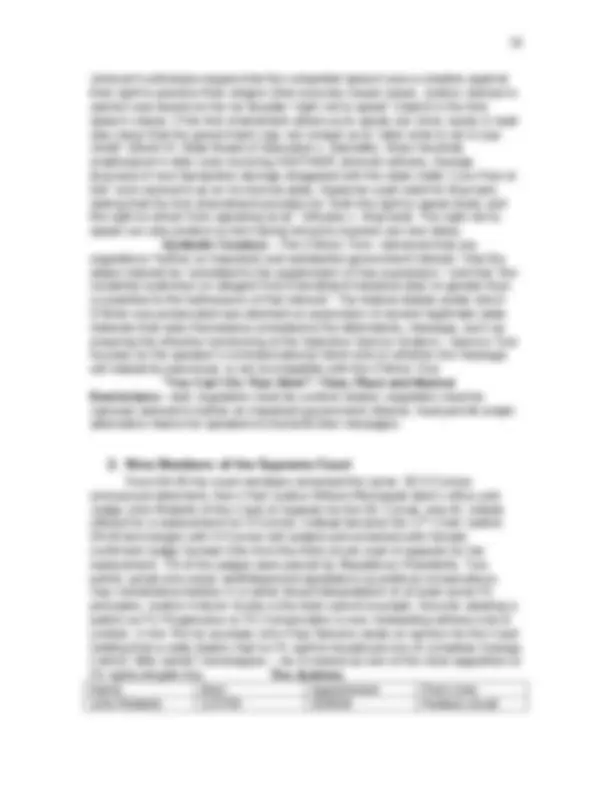
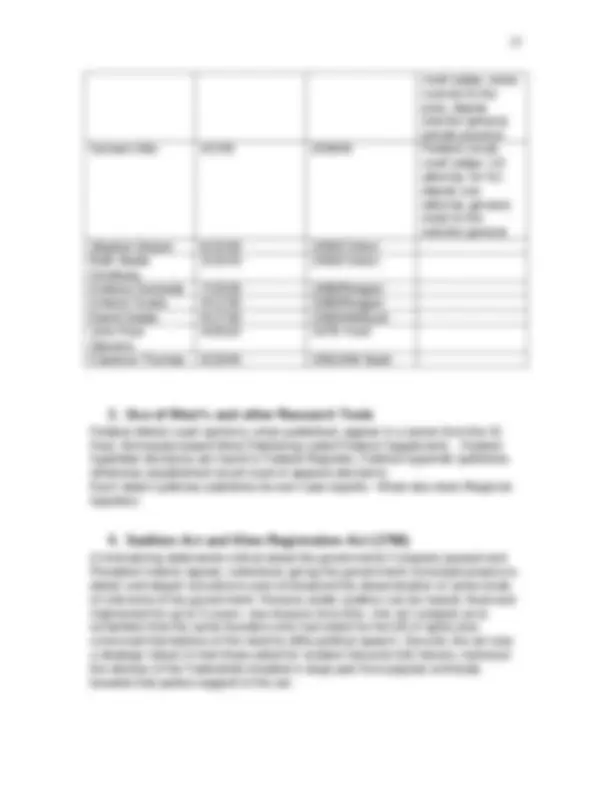
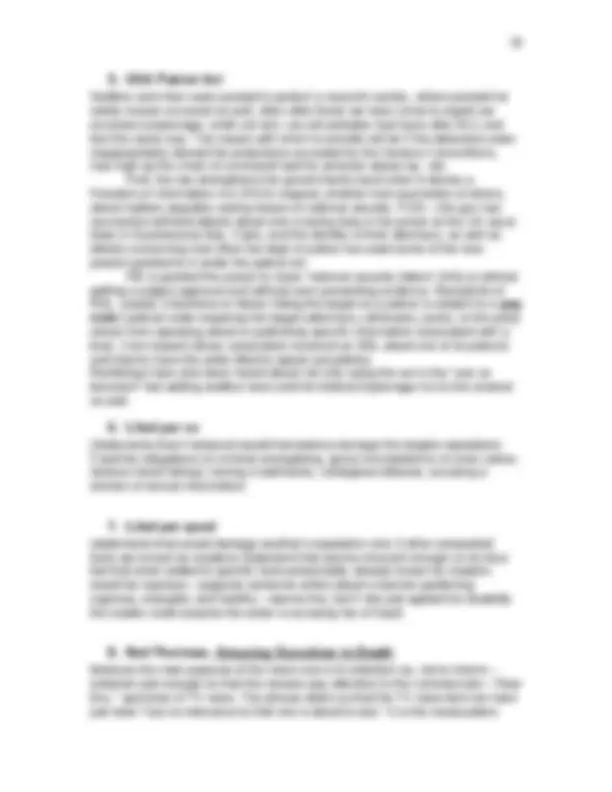
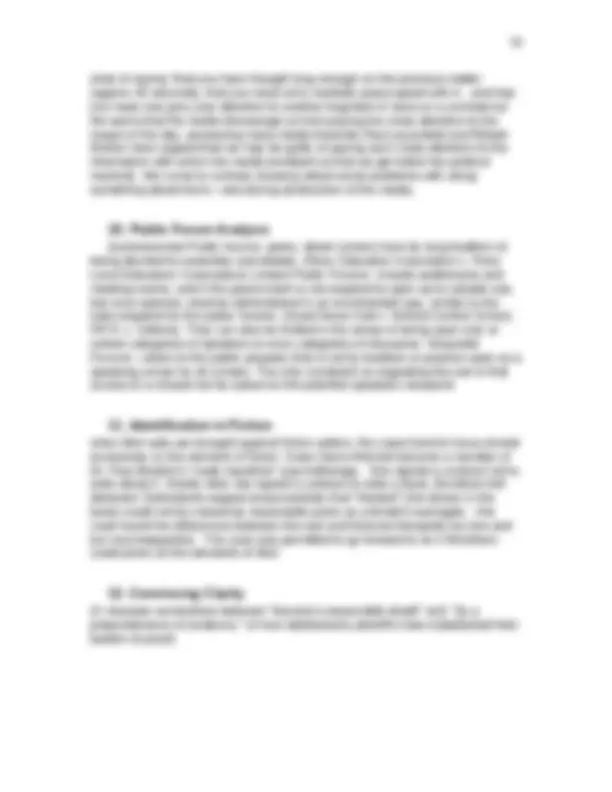
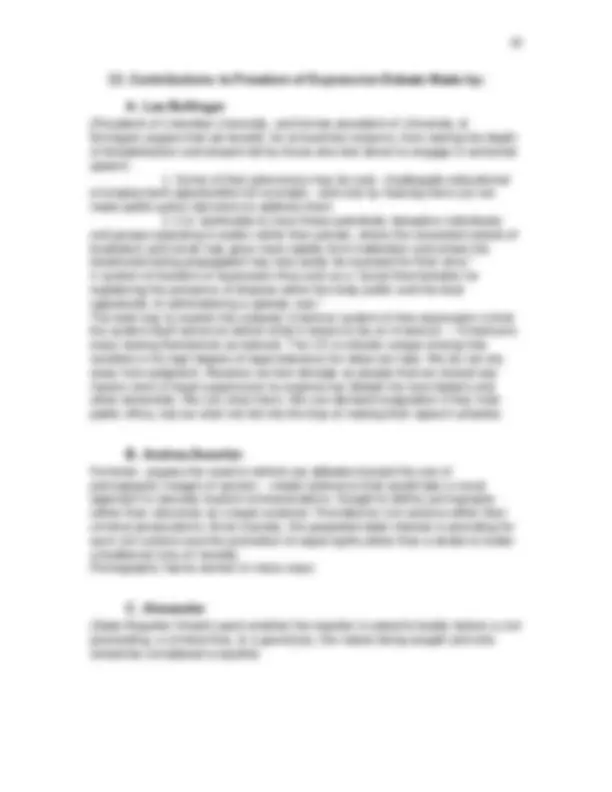
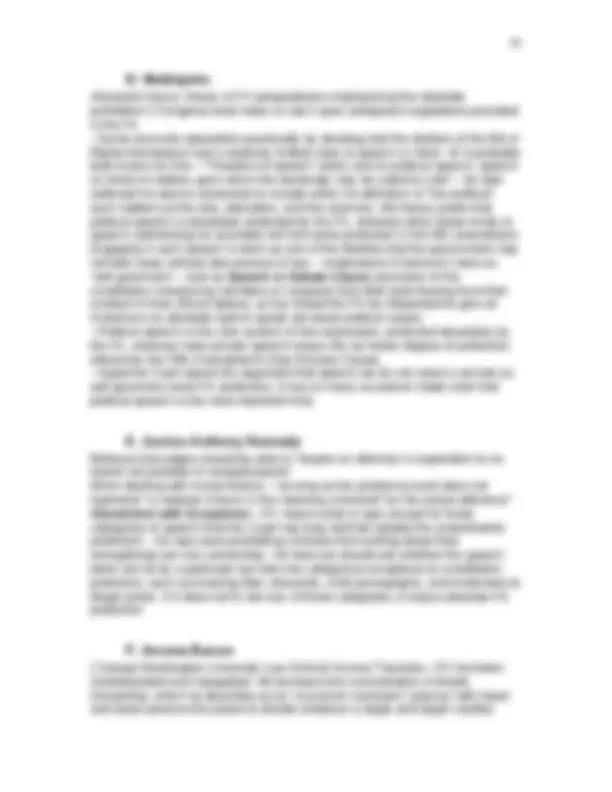
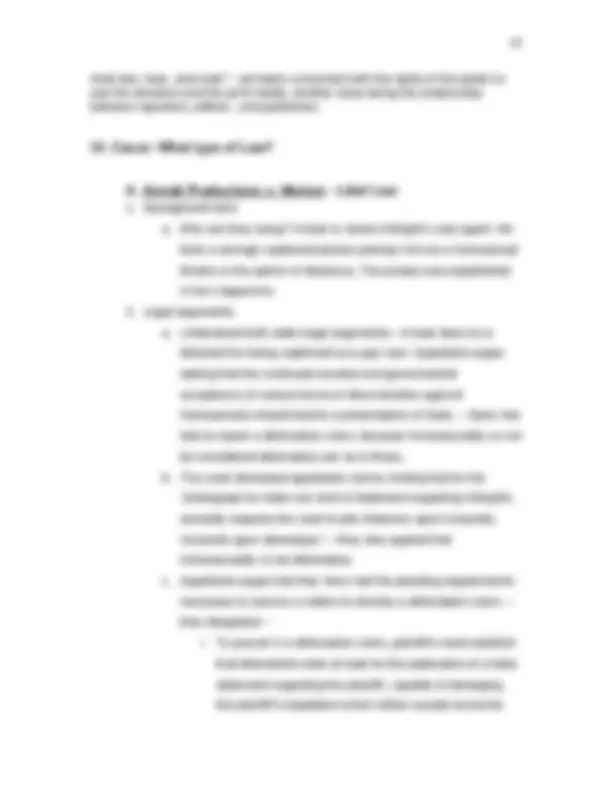
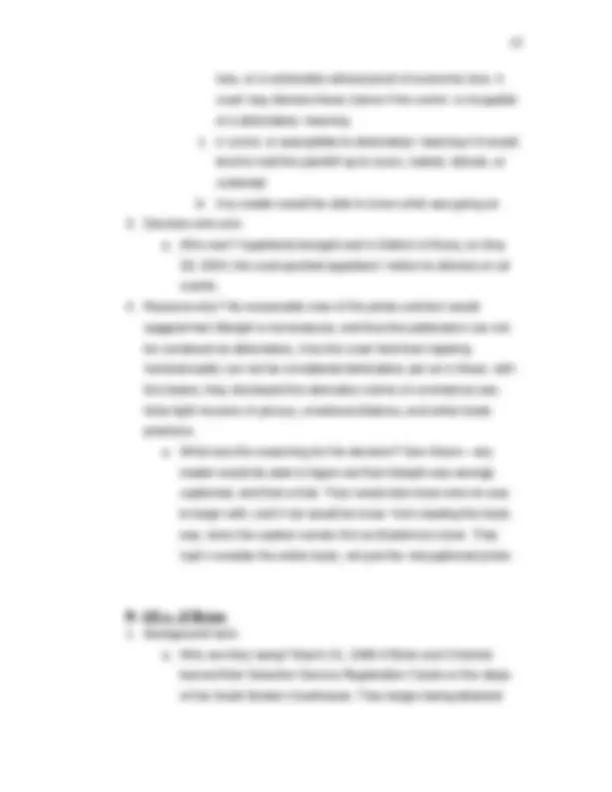
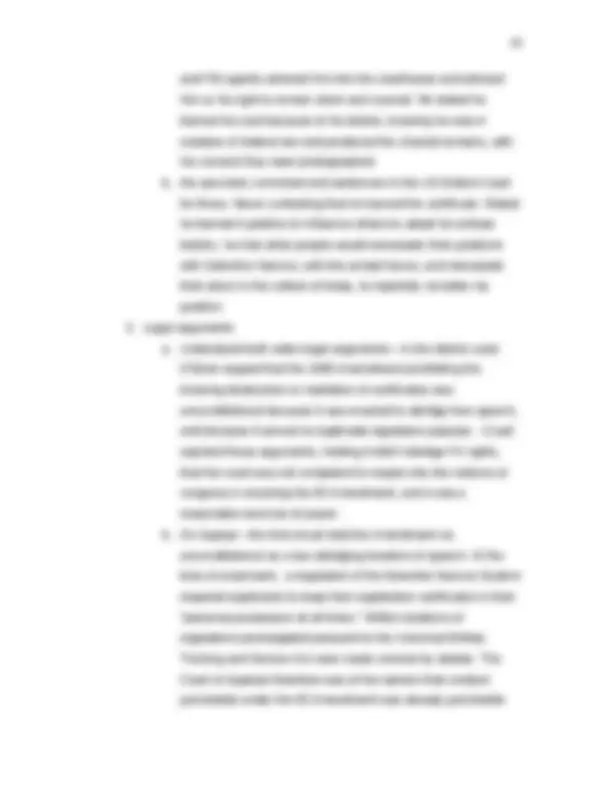
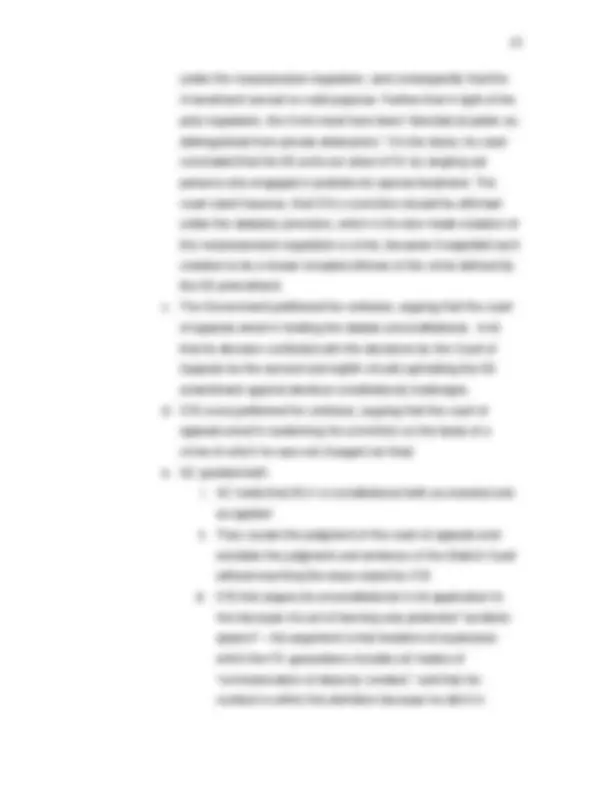
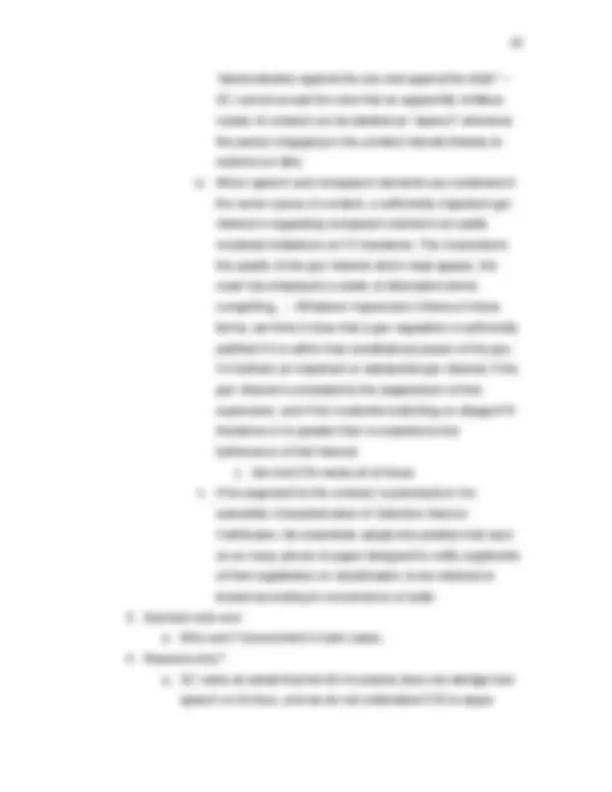
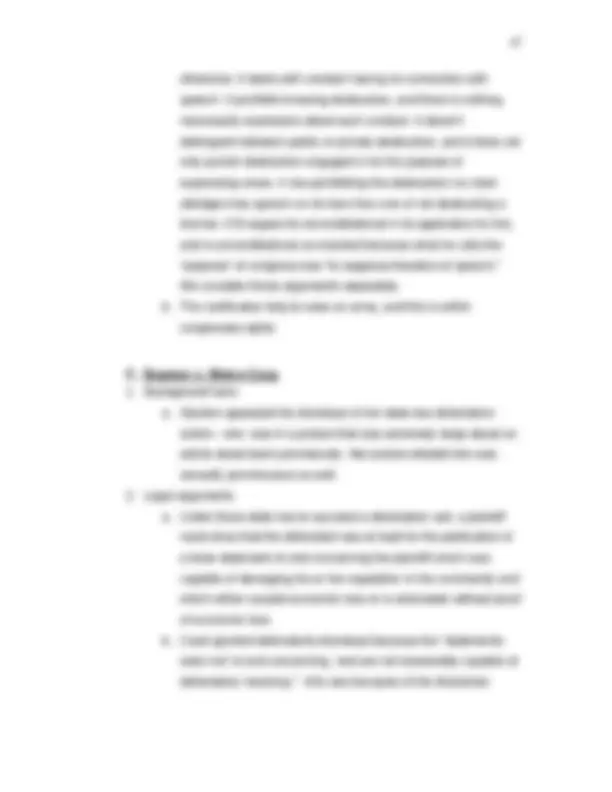
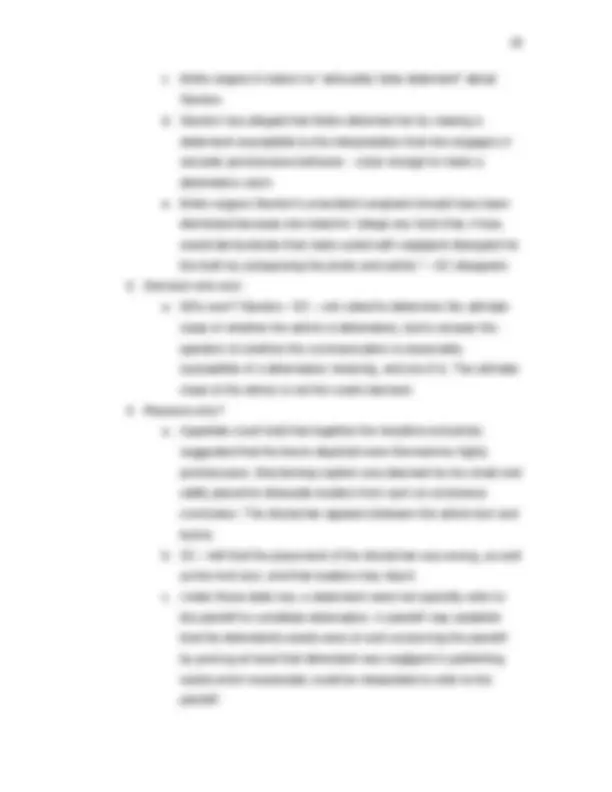
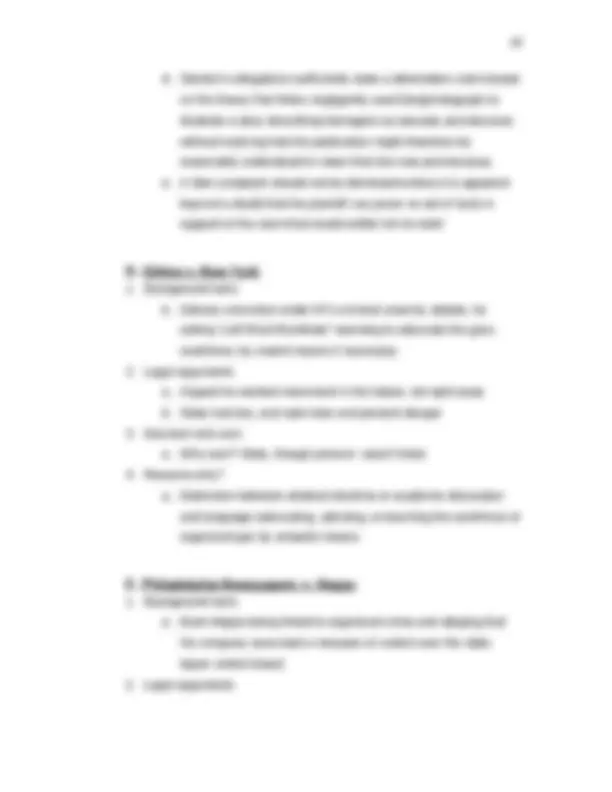
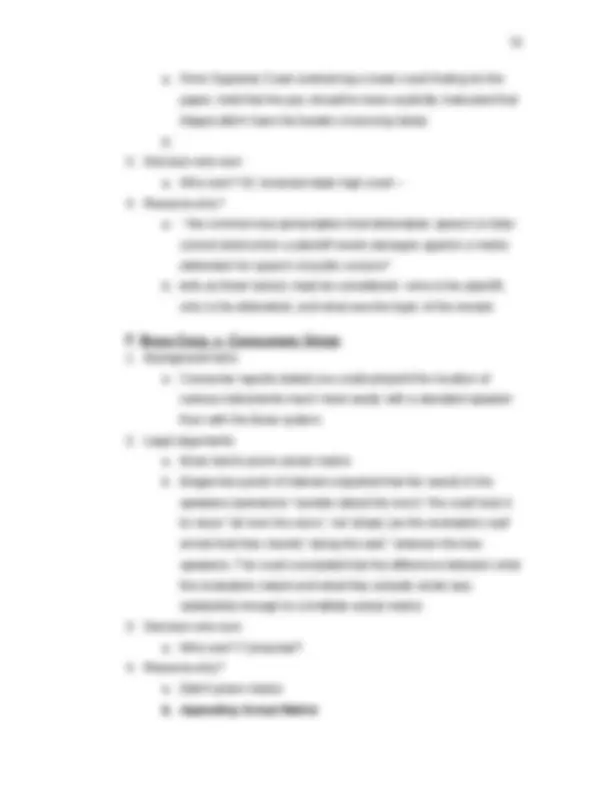
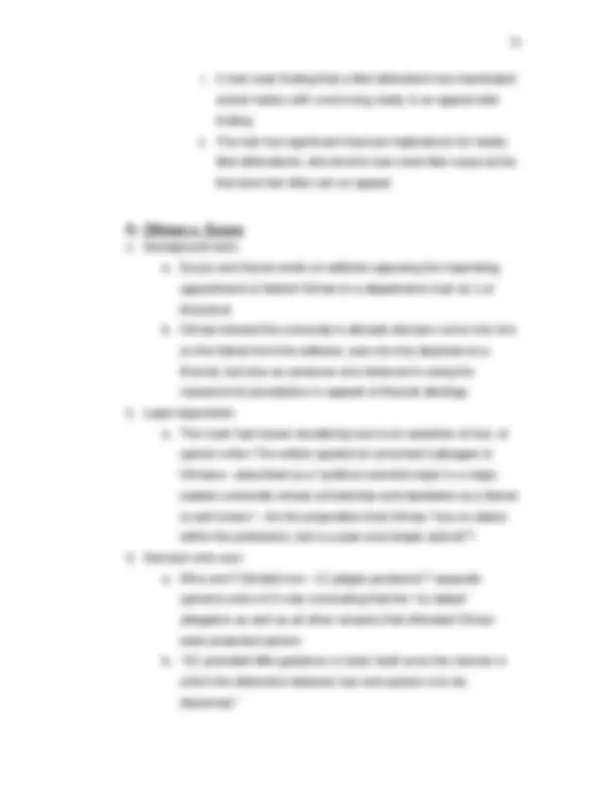
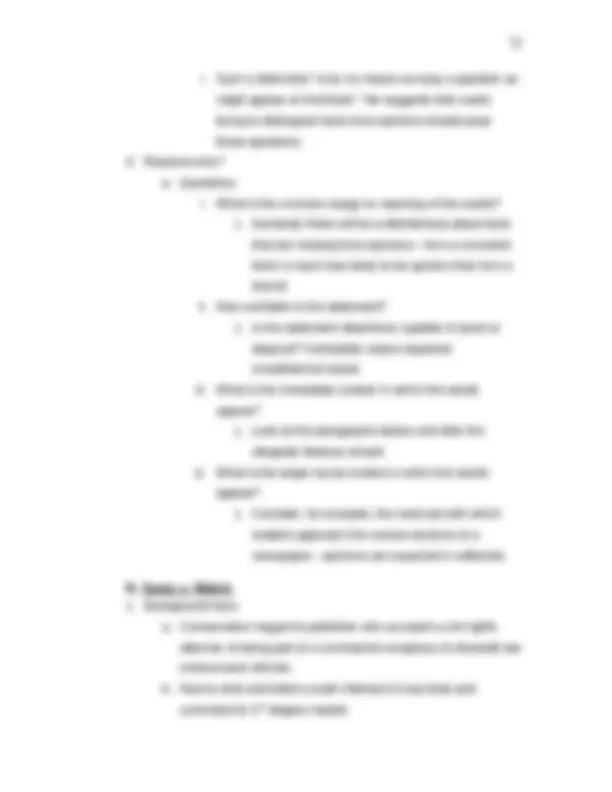
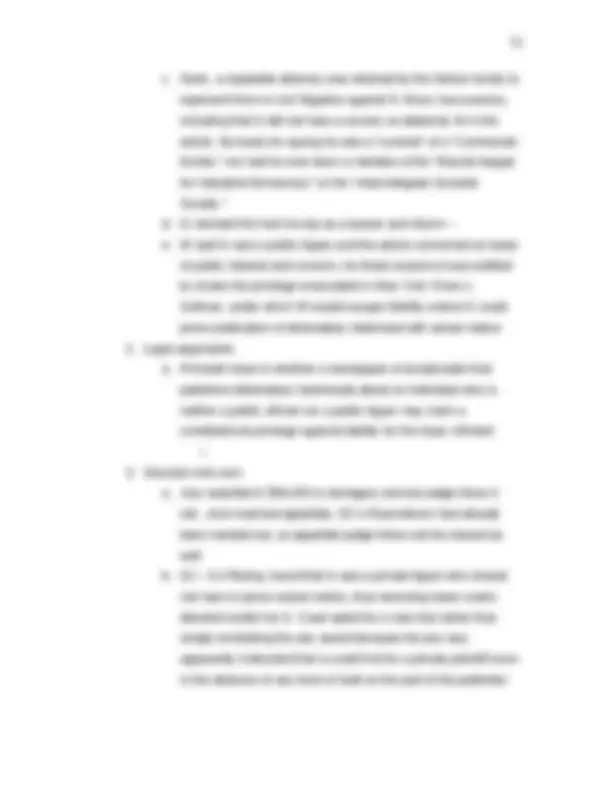
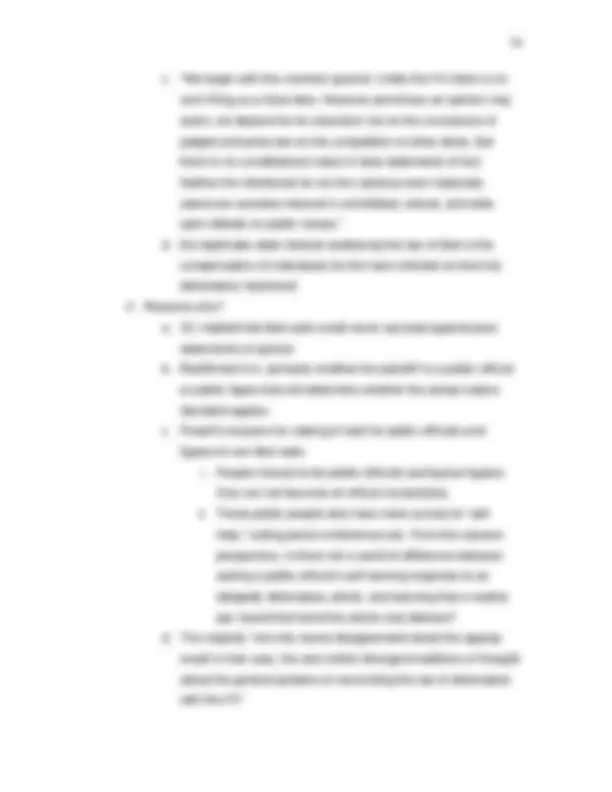
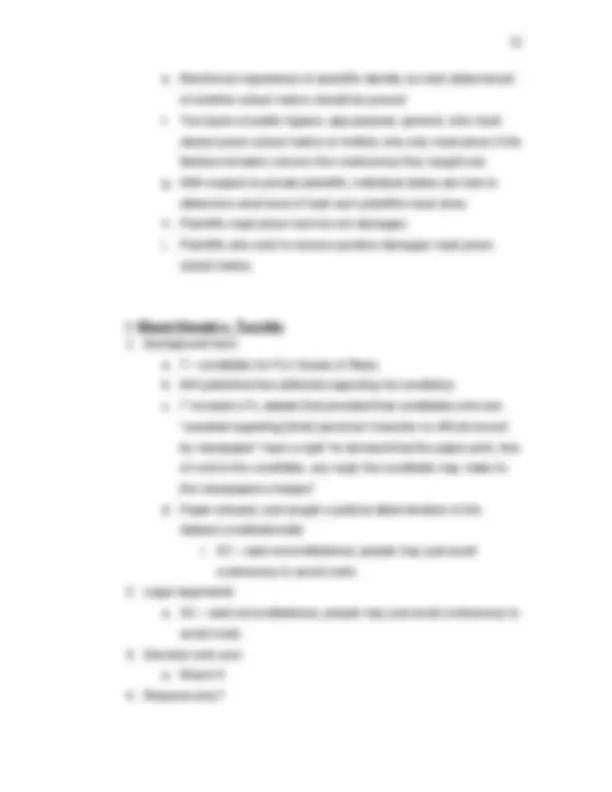
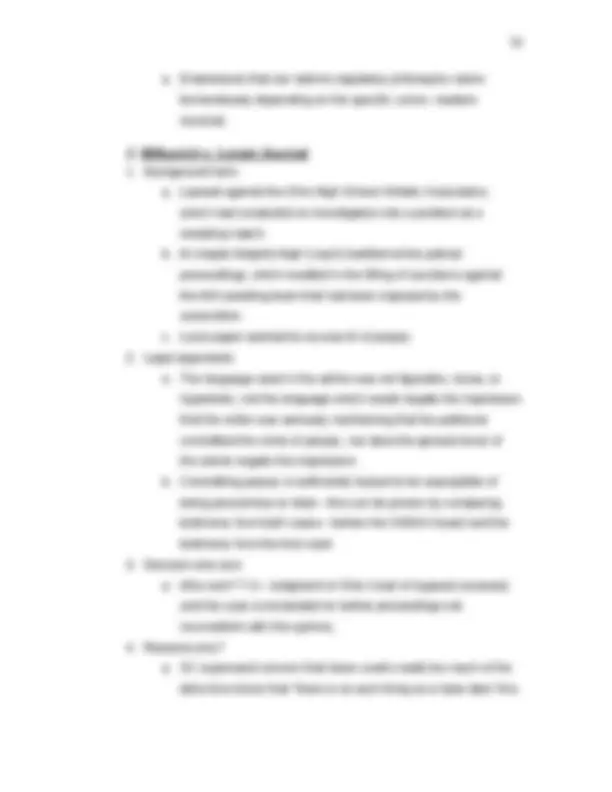
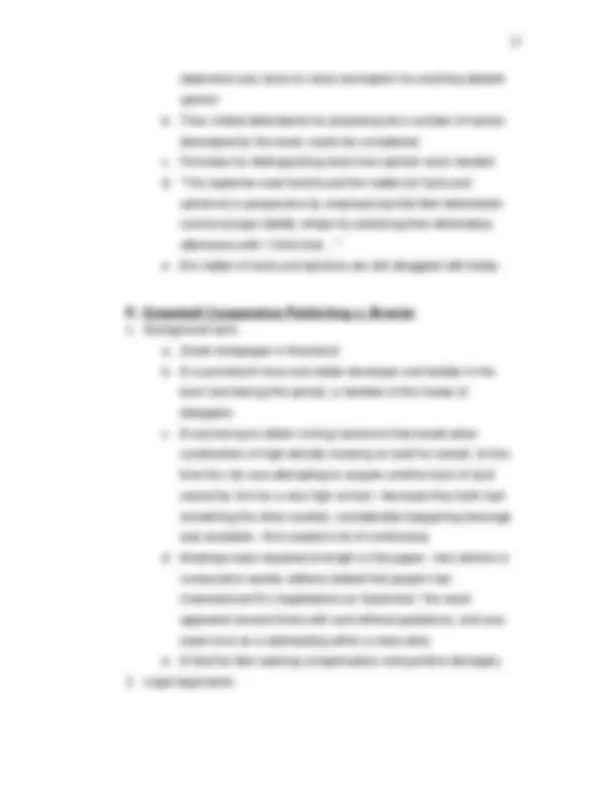
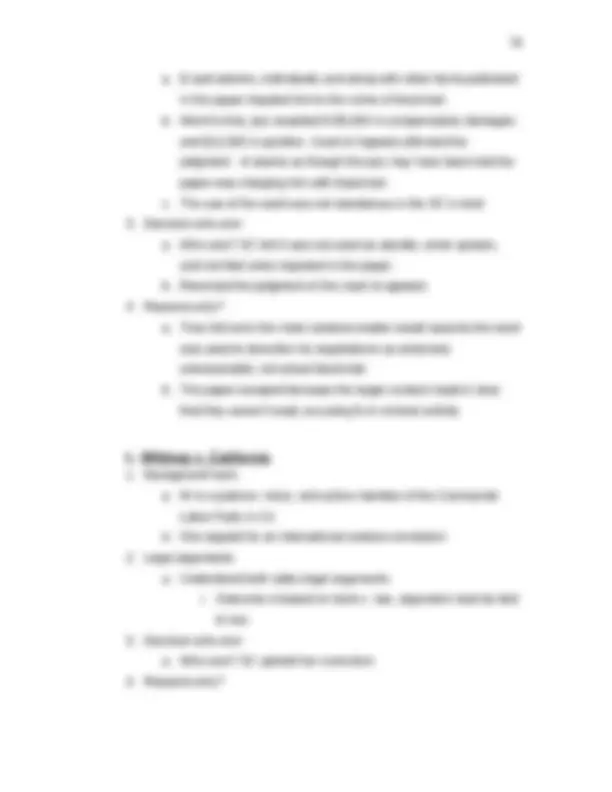
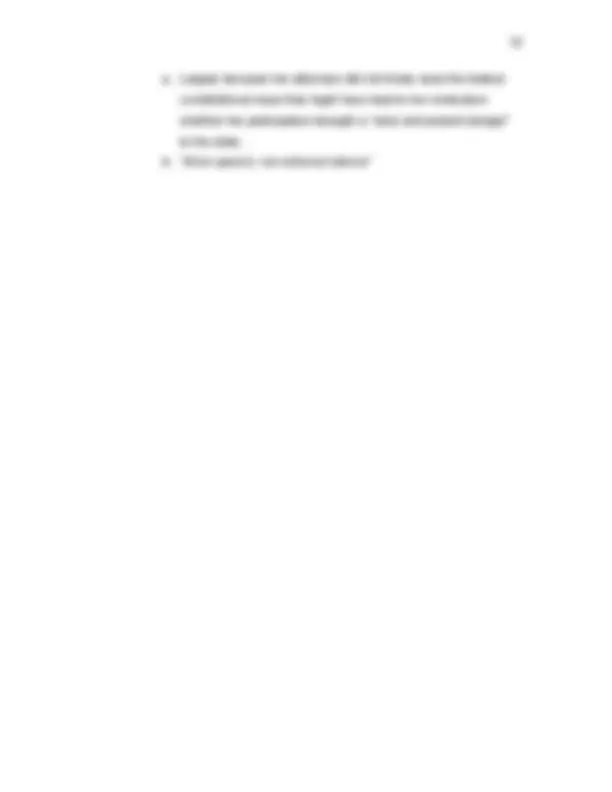


Study with the several resources on Docsity

Earn points by helping other students or get them with a premium plan


Prepare for your exams
Study with the several resources on Docsity

Earn points to download
Earn points by helping other students or get them with a premium plan
Community
Ask the community for help and clear up your study doubts
Discover the best universities in your country according to Docsity users
Free resources
Download our free guides on studying techniques, anxiety management strategies, and thesis advice from Docsity tutors
Material Type: Notes; Class: Communication Law & Ethics; Subject: Communication; University: College of Charleston; Term: Forever 1989;
Typology: Study notes
1 / 59

This page cannot be seen from the preview
Don't miss anything!




















































Takes years
sift through and find the truth—entrusts a lot in the public). Give the people enough points of view and they will find the truth
Prior restraint means censorship—we don’t like censorship, in some cases we allow, and sue after, but sometimes freedom of the press is not the important thing, and censorship is needed While we don’t like prior restraint, some issues we draw the line
Fault Proven depends on the person:
“Public Figure” “Private Person” Must be paid by tax dollars Well-known
Want to change laws etc Voluntarily step in spotlight
Privilege —
Negligence, is defined per sate, but means reckless. Malice is the actual intent to do harm
combines freedom of speech and pressdifferent people who have sat on court, or looked at it different ways
get the case, they begin preferring the press point of view, they want to offset the power of the gov with the free press i. Give the press an initial advantage (6,0), then listen to arguments of both sides and then decides
1. US v NYT (1976?) Pentagon Papers Case a. Government filed suit—Vietnam War in 1960s—Kennedy Presidency in 1961, asked Robert McNamara to be head of defense department—he felt he needed more information. He empowers Random (?) corporation to get some answers to critical questions. He wants to know if he can believe the casualty numbers (distrustful of numbers being told of enemy deaths) b. Daniel Elseberg was also a key figure, went to war as a Marine and was a Hawk fully supported the war—left to work for Ran corporation, doing research for McNamara, with his research he changed his views, he didn’t think we should be at war anymore. Elseberg has change of heart through the research
c. McNamera also wasn’t sure he should be supporting the S. Gov, and he found that surrounding countries may be being bombed which is violation of law. Elseberg leaves corporation and takes several thousand top secret papers from pentagon d. Takes the papers to NYT, and tells them the people aren’t getting the right info, he wants the people to not support the war after they get all the info e. NYT goes to lawyer and lawyer tells them to take the documents back because it’s illegal, NYT prints anyways, so law firm quits representation. Many editors and staff didn’t feel comfortable with the infor being in the office, and others said if they weren’t printed they would quit f. Start printing in mid June 1971, series of articles00sunday June 12 1971 was first, explaining we are wrong g. At this point we have Nixon in the office. NYT criticizes previous presidents—Kennedy and _____ (democrats)(Nixon republican). N is angry with printing top secret documents, concerned trust with outside countries would diminish because of this. h. He asks NYT to quit out of respect to the nation, NYT says no, so he files suit i. Nixon v NYT (plaintiff) Judge asks them to quit writing until judgment is made—they say no again, so he hits them with a temporary injunction j. First temporary injunction ever in the nation—forbid them to print, before long the supreme court took the case, rare instance that it was taken quickly by them because they saw others printing as well. k. Court Split, but voted for NYT, didn’t think Nixon made a strong enough argument, didn’t see soldiers being harmed. They also
iv. Specific law was violated AEO—Atomic Energy Act— said couldn’t go around talking about this stuff f. Judgment in US favor, after this the info was published in Canada, but as far as we know no country used the info to make bombs
3. JB Pictures v. Department of Defense a. Dealing with pictures in Iraq , we knew people would die, when happened deliver body to Germany, then to Dover DE, then on to their home b. Military doesn’t want JB on base to take pictures and interviews, JB says they have a right to be there under freedom of the press. They said that if the families wanted them to be involved, they could talk to them, without being on the base. c. Press thought some families weren’t being told the truth about their deaths, thought they were being killed by friendly fire, and the military was covering that up—so they thought being on the base they could get to people in the know and find the truth— they didn’t want individual pictures of people in caskets, they wanted a bunch at once maybe but not the individuals—military may have been covering up and also didn’t want the people to loose faith in the war d. As long as we’ve had wars, there have been issues with generals and press i. Civil war-Sherman hated reporters—5 reporters died in a battle he was told and he didn’t care e. Government won the case 4. Schenck v. US (1919 ) a. WWI was the issue-G started war, US is over there Woodrow Wilson is pres, trying to win the war b. Schenck tries to create problems—he’s a member of the Socialist Party—this party was against the war. Thinks its
misguided, people are being killed for no reason. Thinks we need out, socialist party uses that point of view—to promote it they distribute leaflets and pass them out on the street pointing that Americans are dying for nothing and bullet makers are getting rich c. Gov decides to prosecute S—Espionage and ____ acts had just been passed, and said he was undermining the war d. US had not had a sedition issue in over 20 years. The gov was esp annoyed with the pamphlets telling men not to go along with the draft, that when they were asked to go they should not show up, shouldn’t register for the draft. e. S’s lawyer would argue freedom of the press f. Gov argues we are IN the war, before the war is different, but once in we need united front. S’s lawyer says we need freedom of speech even when in war time, not only have freedom with unimportant issues g. Court votes for US i. Famous comments:
g. This is still the law at this time, nothing has changed in 41 years, B is still the precedent
8. Snepp v US a. S is member of CIA—during Vietnam war in 70s b. After war writes Decent Interval—book arguing that US gov and military failed the people of V as war ended. In war, US backed S.V against NV. As it was ending, left too abruptly, should’ve stayed and protected them. A lot of our supporters in SV were killed because of this because we left too quickly and didn’t protect them c. Legal problem was CIA was very unhappy, saying he didn’t hold up his side of letting them see the book first, he signed legal agreement saying CIA could see anything written, or interviews etc he gave. d. Agreement is made for national security, so intentional or unintentional information couldn’t hurt the nation e. He argues freedom of press, other authors have more freedom than he did, he also argues nothing he wrote was national security threat, but CIA only argued that S didn’t get it reviewed, not that it was a threat, they needed to make an example of him for future issues. S felt it wasn’t always applied, if favorable book, didn’t matter, if not then they applied it. f. Wrote another book Irrepuble Damage in response to all the issues he had with the first one. Saying they could make you bankrupt with changes g. Supreme court felt he had contractual agreement, he signed and was in violation of the law. (Against him) 9. Near v. Minnesota (1931) a. Writer for paper—criticizes in flowery language police, prosecutor and mayor. Says illegal prostitution, alcohol, etc—
says prosecutors and police are being bought off. The gov was getting annoyed with him b. His boss was shot 4 times at a stop sign c. Near writes saying that if they think they can silence them by killing the boss it wont work, they will speak out even more, this annoys the gov more. d. Thug goes into dry-cleaning by Mr. shapirro, explains how it works, Mr. shapirro says we don’t need you, thug says you don’t understand, organized crime runs this business in miniappolous, and this is how its going to be, beat him up some, then some back and ruin $8,000 worth of clothes. Playing hardball to get him to cooperate, he notifies authorities, and nothing happens, therefore he goes to the press—just as Elesberg did e. Near takes up report saying how the man is upstanding man, with hard work etc, he told authorities and they do nothing. They authorities are angry again—prosecute Near and newspaper under nuisance law—can close if …. f. Go to supreme court, (5-4) in favor of newspaper—saying law goes too far, cant close newspaper because its criticizes the gov. Mn didn’t want to fine, or punish for one article, they wanted to shut them down. g. Think about : Chief justice of the US was Charles Evans Hughes (rep candidate for pres in 1916 lost to w. Wilson, later on World Court). He votes in favor, and writes Dicta (words) adds footnote (extra words not needed because not directly related to case) “Words endured in times of piece, are not necessarily words to be endured during times of war.” Telling people of media and gov, that he voted for freedom of press, against prior restraint, but don’t think that ill vote the same in a war time. Attitude is different in peace, then when dealing with national security.
d. High profile case, media follows, killer is arrested, they then begin to investigate Mr. Horn, he makes a tape of him and his gf, in CA sitting on the couch for an alibi, they prosecute him for paying someone to kill them e. As killers are prosecuted a book was involved, Hit man: A Techniqual Manual for Independent Contractors—book the killer had used to commit the hits, kind of a step by step guide to everything your going to need. f. Rice is sister of ex-wife—she sues the publisher of the book. g. Publishers view is that only one person used the book, where do we draw the line? Slippery Slope. h. Never went to Supreme court—did go to Appeals (Richmond, VA) i. One of the judges voted against freedom of the press, that the family could collect, and said this was a special case, it was action. j. Paladin also published many other books along these lines B&E from A to Z—what is the value of these books? Even if you have the right, what good could come out of this?—Rex Ferrow was the publisher of the book (this is a pen name—it was a woman)
12. Grosjean (Attorney) v. American Press (Lousiana 1936)—Houylaw (?) a. H was colorful in politics, ended up shot and killed (motto “let the good times roll”) b. Criticized by the media c. Brought about new tax for newspapers, if you sold more than a certain amount you had to pay taxes (H didn’t want to be criticized, News didn’t want to pay the tax) d. Press argues to supreme court its an unconstitutional tax. e. They vote it is unconstitutional—why? Politically motivated, normal taxes were established to raise $ for gov for services
provided—they felt this tax wasn’t going to raise much, and it also wasn’t for that reason. They also felt it was discriminatory, only certain businesses would pay, and only a few of those (newspapers) would pay that, because they had to sell 20,000. Why 20,000? Because the criticism was coming from big city papers, they could punish the enemies and not hurt the friends f. Court didn’t like this—what if you were selling 19,950? Don’t sell anymore cause don’t want to pay the tax. This is prior restraint, they are withholding the flow of information. Politically motivated g. Declare tax invalid, wont let it stand
13. City of Corona (CA) v. Corona Daily (1953) a. City gov enacts tax for business being held in city limits. Feel as though mayor is out to get them, newspapers don’t want to pay b. Paper argues precedent of Grosjean—court here votes against why would they loose? c. The tax was applied to everyone, not just newspapers, would also generate substantial funding. d. Court says newspapers and all media have to pay fair taxes because they want services like the rest of the people (fire dept etc.), not unfair politically based taxes 14. Simon and Schuster V NY Crime Victims Board (1986?) a. David Burkowitz had killed a number of people and hadn’t been arrested. He was taunting the police and press, signed himself “Son of Sam” became known as Son of Sam Killer b. Continued killing, eventually police arrest, tried, convicted and sent to prison c. Then we find he may write a book about his life and exploits d. NY sets law that if you come and kill and write books, you can profit from it, the profits will go to the victims. e. Should he be able to make $ off murder?